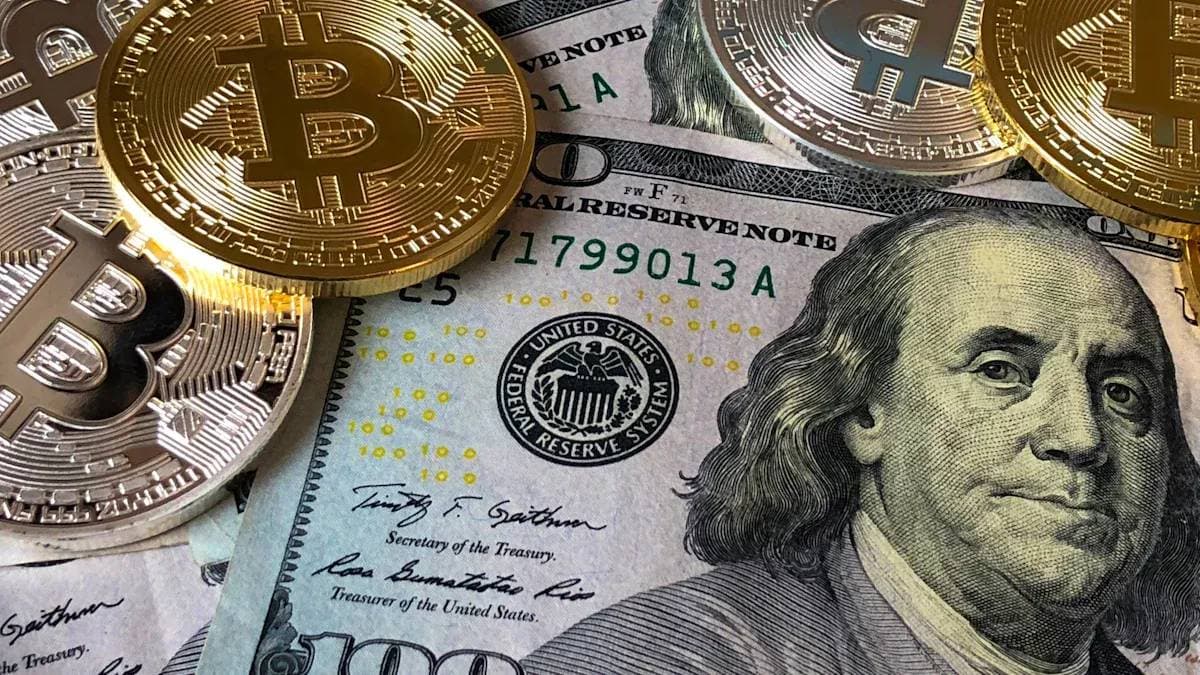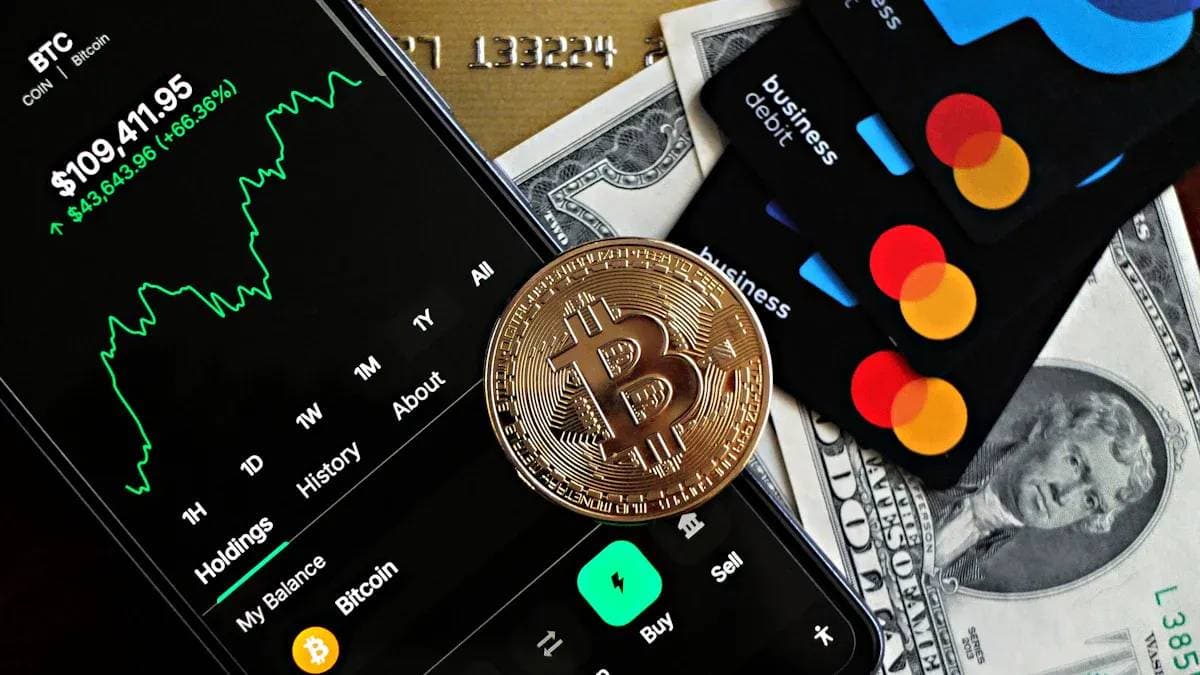- EasyCard
- Trade
- Help
- Announcement
- Academy
- SWIFT Code
- Iban Number
- Referral
- Customer Service
- Blog
- Creator
Real Challenges in Stablecoin Cross-Border Payments: How to Balance Instant Settlement with Asset Security

Image Source: unsplash
Stablecoin international remittances offer unprecedented efficiency. Traditional wire transfers require days of waiting, while stablecoin payments complete settlement within minutes, with costs typically under 1%, and operate year-round.
This near-instant global settlement capability attracts a large number of users. However, while enjoying the convenience, users must also face the security risks behind it. Market de-pegging, asset freezing, or hacker attacks can lead to severe fund losses. This article aims to provide a clear action guide to help users find a balance between speed and security, thereby confidently using this innovative financial tool.
Key Takeaways
- Stablecoin payments are fast and low-cost but carry risks of de-pegging, freezing, and technical issues.
- Choosing highly transparent, regulated stablecoins like USDC can reduce risks.
- Diversifying investments by combining centralized and decentralized stablecoins can protect assets.
- Carefully verifying transaction information and using hardware wallets can avoid operational errors.
- Using compliant payment platforms enables safe stablecoin-to-fiat exchanges.
Advantages and Real Risks of Stablecoin Payments

Image Source: unsplash
Advantage: Near-Instant Global Settlement
The core advantage of stablecoins lies in their disruptive settlement efficiency. It breaks the time zone and holiday restrictions of traditional banking systems, providing a year-round (7x24) instant payment network. For businesses, this means:
- Accelerate Fund Circulation: Multinational companies can instantly transfer funds between subsidiaries, allowing finance teams to adjust global cash positions in real time, significantly improving cash flow.
- Reduce Operating Costs: SMEs using stablecoins for supplier payments and international trade settlements can effectively avoid high transaction fees and payment delays.
For individual users, especially in emerging markets with inadequate banking services or unstable local currencies, stablecoins play a more critical role. They not only provide a low-cost channel for stablecoin international remittances but also serve as an important tool against high inflation and for value preservation savings.
Risk 1: Market and Price De-Pegging
Fiat-collateralized stablecoins (such as USDT and USDC) anchor their value to reserve assets. Maintaining a 1:1 peg with the USD entirely depends on the issuer holding sufficient, highly liquid reserves.
Reserve Quality is Key The composition of reserve assets directly affects market confidence. For example, USDC’s issuer discloses that about 80% of reserves are short-term U.S. Treasury bonds, with the rest in cash deposits, such high-liquidity assets designed to ensure stability during large-scale redemptions. If reserves include higher-risk or less liquid assets, a market panic sell-off could lead to “de-pegging” risk, with the stablecoin’s value falling below 1 USD.
Risk 2: Regulation and Asset Freezing
Although stablecoins operate on decentralized blockchains, their issuers are usually centralized entities that must comply with national laws and regulations. This means user assets are not completely immune to intervention.
According to legal requirements (such as the U.S. GENIUS Act draft) or legitimate requests from law enforcement, stablecoin issuers (such as Tether and Circle) have the right to freeze addresses suspected of illegal activities (such as money laundering or fraud). Records show issuers have cooperated with law enforcement multiple times, freezing assets worth billions of USD. This “blacklist” function helps combat crime but also means users’ assets can be unilaterally frozen.
Risk 3: Technical and Operational Errors
Technical risks mainly stem from two levels: smart contract vulnerabilities and personal operational errors. While mainstream stablecoins rely on highly secure public chains (such as Ethereum), users’ personal security defenses are more vulnerable.
Phishing and address poisoning scams are rampant. Attackers forge transactions or send fake authorization requests to trick users into transferring funds to malicious addresses. Statistics show that in 2024 alone, wallet drainer attacks caused about $500 million in losses. Any minor negligence during transfers, such as not carefully verifying addresses, can lead to permanent asset loss.
Stablecoin International Remittances: Practical Strategies to Balance Risks

Image Source: pexels
Facing potential risks, users are not merely passive. By adopting a series of proactive risk management strategies, you can fully enjoy stablecoin payment convenience while maximizing asset security. The following four strategies form a complete action framework.
Strategy 1: Prudently Select Stablecoins
Choosing the right stablecoin is the first step in risk management. Mainstream stablecoins on the market vary significantly in reserve transparency and regulatory compliance, directly affecting their security. Currently, USDT and USDC dominate the vast majority of market share.
| Stablecoin | Market Share |
|---|---|
| USDT | About 64% |
| USDC | About 25% |
Although USDT has the highest liquidity and widest acceptance, its reserve asset transparency has long been controversial. In contrast, USDC is issued by regulated U.S. financial institutions and regularly publishes reserve reports audited by top accounting firms, with higher compliance and transparency.
Reserve Asset Comparison: Transparency is Key The reserve compositions of both clearly reflect their risk preference differences. USDC’s reserves mainly consist of cash and short-term U.S. Treasury bonds, with extremely low risk. USDT’s reserves include commercial paper, corporate bonds, and even other digital tokens, with a more complex asset mix.
| Stablecoin | Reserve Composition |
|---|---|
| USDT (Tether) | Cash and cash equivalents, corporate bonds, precious metals, digital tokens, other investments |
| USDC (USD Coin) | Cash, short-term U.S. Treasury bonds |
For businesses and individuals prioritizing asset security and compliance, choosing a stablecoin like USDC with transparent reserves and strict regulation is a more prudent decision.
Strategy 2: Diversified Asset Management
“Don’t put all your eggs in one basket”—this ancient investment maxim applies equally in the crypto world. Diversifying funds across different types of stablecoins effectively hedges against “de-pegging” or freezing risks of a single stablecoin.
An effective strategy is to combine centralized and decentralized stablecoins.
- Centralized Stablecoins (such as USDC): Suitable for daily payments and transactions due to more direct fiat exchange paths.
- Decentralized Stablecoins (such as DAI): Generated by smart contracts through over-collateralization of crypto assets (such as ETH, USDC), not relying on a single centralized issuer, thus avoiding single-point freezing risks.
However, users must also recognize risks of decentralized stablecoins. DAI’s stability highly depends on its collateral value. For example, due to heavy USDC collateral, during USDC’s brief de-peg in March 2023, DAI’s price fluctuated accordingly. Therefore, for stablecoin international remittances, users can store most transaction funds in highly liquid USDC while converting part of reserve funds to DAI to diversify centralized regulatory risks.
Strategy 3: Strengthen Personal Security Defenses
Technical risks often arise from personal operational errors. Building strong personal security defenses is the most direct and effective way to protect assets.
1. Ensure Transaction Accuracy Users must develop strict verification habits before every transfer.
- Verify Network: Ensure the sending and receiving addresses match in network type (both ERC-20 or TRC-20). Sending to the wrong network results in permanent asset loss.
- Small Test Transfer: Before large stablecoin international remittances, send a tiny amount (such as 1 USD) to test, confirming receipt before transferring the rest.
- Character-by-Character Address Check: Carefully verify every character of the recipient address, beware of “address poisoning” attacks where scammers send addresses similar in start and end to common ones, tricking users into copying wrong addresses.
2. Beware of Authorizations and Phishing Scammers often use phishing sites to trick users into signing malicious authorizations, draining all wallet assets.
Think Twice Before Signing When interacting with any decentralized application (DApp), carefully check if the website URL is official. When a wallet pops up a signature request, read the authorization content carefully, especially for
setApprovalForAllunlimited authorizations, remain highly vigilant.
3. Use Professional Asset Management Tools
- Hardware Wallets: For large or long-term held assets, use hardware wallets (cold wallets) for storage. Offline private key storage physically isolates from cyber attacks.
- Multi-Signature Wallets: For funds managed by enterprises or teams, strongly recommend multi-signature wallets. They require multiple parties (e.g., 2 out of 3 managers) to sign for a transaction, effectively preventing single-point failures, internal theft, or risks from losing a single private key.
Strategy 4: Leverage Compliant Payment Channels
For businesses and individuals needing frequent stablecoin-to-fiat exchanges, choosing a compliant payment channel is crucial. These platforms adhere to strict anti-money laundering (AML) and know your customer (KYC) regulations, providing security and legitimacy for user funds.
Compliant payment platforms typically require users to provide identity information (such as name, address, government-issued ID) for verification and continuously monitor transactions to prevent illegal activities. This is not only a regulatory requirement but also a vital measure to protect all platform users’ fund security.
The market now has multiple mature solutions, such as Coinbase Commerce and Paxos, offering stablecoin receipt and fiat settlement services for businesses. Taking emerging payment platforms like Biyapay as an example, it focuses on providing efficient stablecoin international remittance solutions, allowing users to securely exchange held USDT or USDC into USD and settle to their licensed Hong Kong bank accounts, achieving seamless connection between crypto assets and traditional financial systems.
The value of these compliant channels lies in encapsulating complex blockchain operations behind simple user interfaces while handling all necessary compliance processes, enabling users to complete global payments safely and conveniently like using traditional online banking. Latin American e-commerce giant Mercado Libre has adopted USDC for supplier payments, significantly improving operational efficiency. This proves the enormous potential of compliant stablecoin payments in real business scenarios.
The speed and security of stablecoin cross-border payments are not a zero-sum game. Through proactive risk management, users can fully achieve balance between the two.
Action Principles Prefer assets, diversify risks, strengthen defenses, embrace compliance.
As regulatory frameworks become clearer, clear regulations are becoming “green lights” driving adoption rather than obstacles. In practice, users should make risk assessment a necessary step for every transaction, thereby safely and efficiently utilizing this innovative financial tool.
FAQ
How should I choose between USDT and USDC?
The choice depends on user risk preferences. USDC is issued by regulated U.S. financial institutions with high reserve asset transparency, mainly cash and U.S. Treasury bonds, focusing more on compliance and security. USDT has broader liquidity but more complex reserve composition and relatively lower transparency.
What should I do if a stablecoin de-pegs?
Stay calm and avoid panic selling.
Users should assess the de-peg cause. If short-term market fluctuation, the price usually recovers. If severe issuer reserve issues, consider exchanging through compliant channels to fiat or more stable assets to mitigate risks.
Why does using compliant payment channels require identity verification (KYC)?
Identity verification is necessary to comply with anti-money laundering (AML) regulations. It protects all platform users’ fund security, prevents illegal fund inflows, and ensures transaction legitimacy. Compliance is the foundation for stablecoin payments being accepted by mainstream financial systems.
Can hardware wallets absolutely guarantee my asset security?
Hardware wallets greatly enhance asset security by offline private key storage, effectively defending against cyber attacks. But they cannot prevent user operational errors, such as transferring to wrong addresses or being tricked into signing malicious authorizations. Therefore, cautious operations are equally important.
*This article is provided for general information purposes and does not constitute legal, tax or other professional advice from BiyaPay or its subsidiaries and its affiliates, and it is not intended as a substitute for obtaining advice from a financial advisor or any other professional.
We make no representations, warranties or warranties, express or implied, as to the accuracy, completeness or timeliness of the contents of this publication.




Contact Us
Company and Team
BiyaPay Products
Customer Services
BIYA GLOBAL LLC is a licensed entity registered with the U.S. Securities and Exchange Commission (SEC No.: 802-127417); a certified member of the Financial Industry Regulatory Authority (FINRA) (Central Registration Depository CRD No.: 325027); regulated by the Financial Industry Regulatory Authority (FINRA) and the U.S. Securities and Exchange Commission (SEC).
BIYA GLOBAL LLC is registered with the Financial Crimes Enforcement Network (FinCEN), an agency under the U.S. Department of the Treasury, as a Money Services Business (MSB), with registration number 31000218637349, and regulated by the Financial Crimes Enforcement Network (FinCEN).
BIYA GLOBAL LIMITED is a registered Financial Service Provider (FSP) in New Zealand, with registration number FSP1007221, and is also a registered member of the Financial Services Complaints Limited (FSCL), an independent dispute resolution scheme in New Zealand.




















